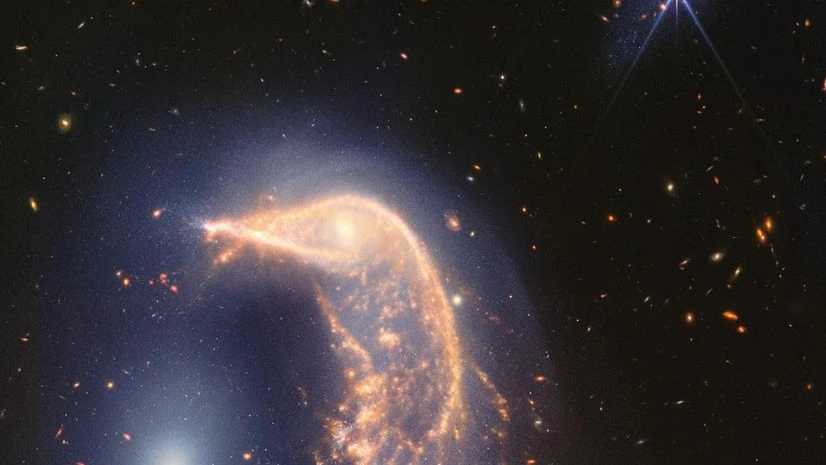)
Image taken from Nasa-Webb Space Telescope’s X account, handle: @NASAWebb
The Webb Space Telescope has captured a pair of intertwined galaxies glowing in the infrared.
The observatory operated by NASA and the European Space Agency photographed the two galaxies 326 million light-years away, surrounded by a blue haze of stars and gas. A light-year is 5.8 trillion miles.
The pictures, released Friday, marks the second anniversary of Webb’s science operations.
The neighbouring galaxies, nicknamed Penguin and the Egg, have been tangled up for tens of millions of years, according to NASA. They’ll eventually merge into a single galaxy. The same interaction will happen to our own Milky Way and the Andromeda Galaxy in 4 billion years, the space agency said.
Considered the successor to the aging Hubble Space Telescope, Webb is the biggest and most powerful astronomical observatory ever launched. It rocketed away in 2021 and underwent six months of commissioning, before its first official images were released in July 2022.
It’s positioned 1 million miles (1.6 million kilometres) from Earth.
In just two years, Webb has transformed our view of the universe, NASA’s Mark Clampin said in a statement.
(Only the headline and picture of this report may have been reworked by the Business Standard staff; the rest of the content is auto-generated from a syndicated feed.)
First Published: Jul 12 2024 | 10:31 PM IST


































